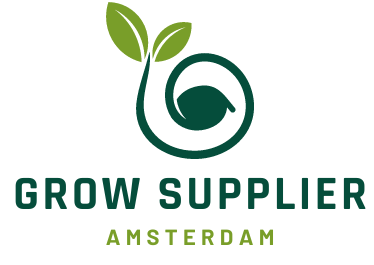The Basics of Growing: A Practical Guide for Beginners
Share
Growing your own plants is a wonderful and educational experience. Whether you want to grow vegetables, herbs, or flowers, understanding the basics is essential to encouraging healthy growth and maximizing your harvest. In this guide, we’ll walk you through the key steps and elements of successful growing, so you can get started well-prepared.
1. Choose the Right Substrate
The substrate – the base in which your plants grow – determines their success. Depending on the needs of your plants, you can choose from various options:
- Potting soil: Ideal for traditional cultivation, with a good balance between nutrients and airiness.
- Cocos: Provides excellent air circulation and water retention, perfect for rapid root growth.
- Hydro grains: Suitable for hydroponics. They provide a stable base without nutrients and work excellently in combination with systems such as DWC or RDWC.
2. Provide Sufficient Light
Light is crucial for photosynthesis and overall plant development. Good lighting provides your plants with energy to grow and bloom:
- LED Lighting: An energy-efficient choice with a long lifespan and less heat development than traditional lamps. Modern LED systems provide the right light spectra for each growth phase.
- Light cycles: Match the light duration to the growth phase of your plants. In the vegetative phase, a cycle of 18 hours of light and 6 hours of darkness is often ideal, while a 12/12 cycle is suitable for the flowering phase.
3. Control Temperature and Humidity
A stable ambient temperature and humidity are essential for healthy plants:
- Temperature: Keep it between 20-25°C during the growth phase and between 18-22°C during the flowering phase.
- Humidity: Young plants require higher humidity (60-70%), while mature plants thrive at lower levels (40-50%) to prevent mold formation.
4. Ensure Good Ventilation
Ventilation plays a key role in regulating temperature, humidity and the supply of carbon dioxide (CO₂):
- Extraction system: Removes warm air and brings in fresh air.
- Fans: Create air currents that strengthen stems and prevent mold formation.
5. Provide the Right Amount of Water and Food
Balance is essential when watering and feeding plants. Here are some guidelines:
- Water: Water when the substrate feels dry, and ensure good drainage to prevent root rot.
- Nutrition: Use nutrients with a balance of nitrogen (N), phosphorus (P) and potassium (K), tailored to the growth phase.
- pH: Keep pH between 5.5 and 6.5 for optimal nutrient absorption.
6. Monitor Growth and Adjust
Successful growing requires daily attention and adjustments:
- Health check: Look for strong stems, green leaves and avoid discolouration.
- Pests and Diseases: Check regularly for pests and use organic controls when necessary.
- Training Techniques: Use techniques such as Low Stress Training (LST) to improve light penetration.
7. Timing of the Harvest
The right harvest time is crucial for quality and yield. Look for signs such as ripe fruit or flowers and follow the specific guidelines for your plants.
Conclusion Growing starts with the basics: light, temperature, humidity, ventilation, water and nutrition. By paying attention to these elements you create an ideal environment for your plants to flourish. Start with a small setup, learn as you go and most of all enjoy the process. Growing your own plants is not only practical, but also incredibly satisfying!
